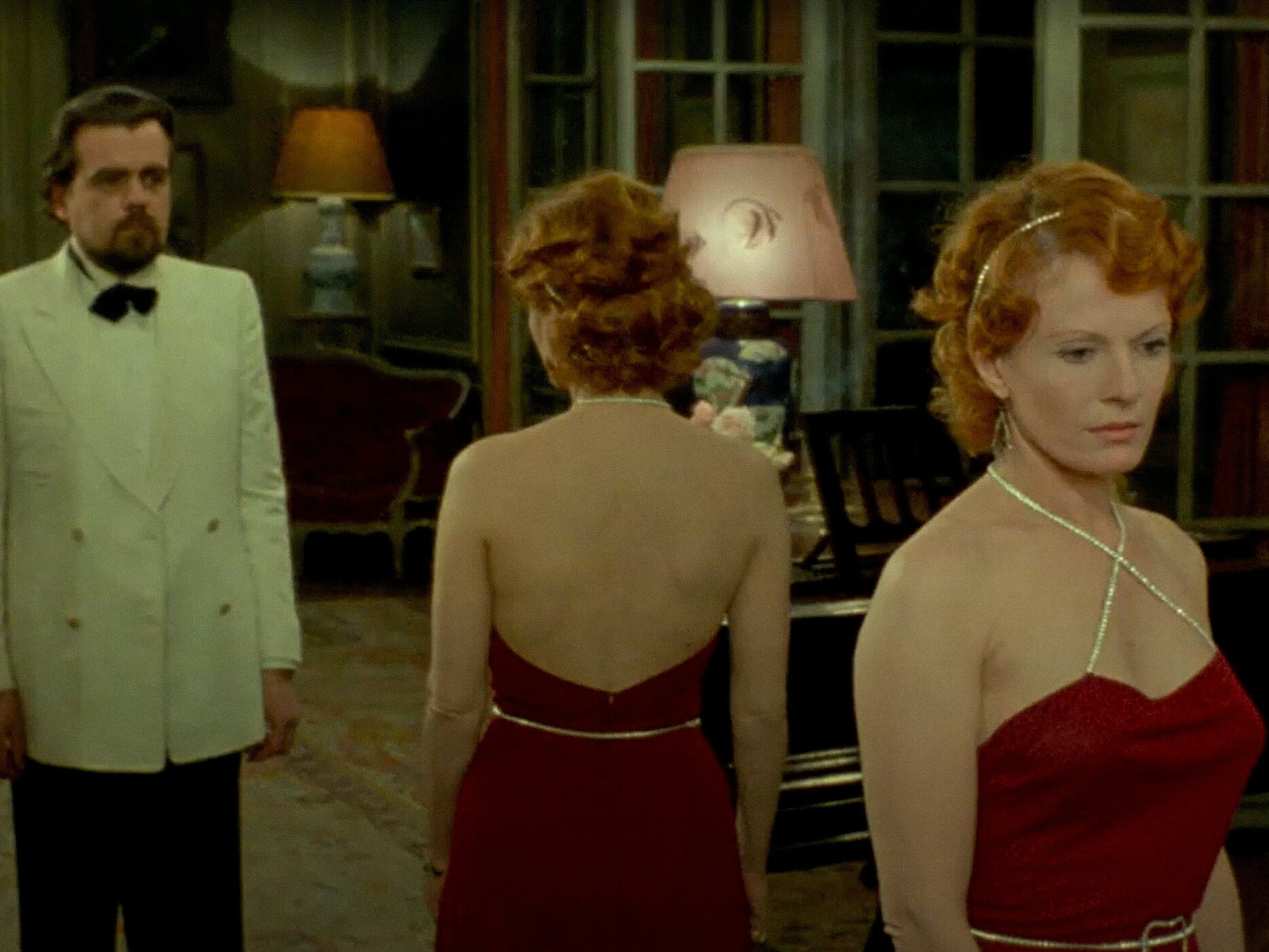
Anne-Marie Stretter, wife of a French diplomat, lives in 1930s India. She takes many lovers as systems of oppression decay around her.
“As savvy spectators of today, we need to remind ourselves of the strangeness of India Song in this regard – and how radical a gesture it must have been in 1975. This is a film in which the act of representing the past – recreating it, evoking and conjuring it, building it on screen – undergoes a massive process of dematerialisation. There are costumes and sets that more or less evoke that past, and music participating in the historical mood… but very little else.
Is the costume-drama flimsiness of India Song a matter of economy, production expedience? On the contrary, it was, from the outset, a fundamental aesthetic decision. The past is gone, cannot be represented, is lost in the mists of its re-mediation and narrativisation; personal experience can only be reconstructed accordingly, at the risk of what Bickerton calls an extreme (and, for her, crippling) ‘sense of otherness from the world’. This is the type of writing or art-making, from the cliff-edge of oblivion, deliberately riddled with absences and impossibilities, that is familiar from the work of Duras’ literary comrade, Maurice Blanchot.”
Adrian Martin1
“The film opens at dusk. The sun exudes a mesmerizing orange glow before receding into the foggy night. We hear the crackling voice of a woman singing in an unknown language before two disembodied voices, servants perhaps, whisper stories about this raucous beggar woman who lives among the lepers. No one knows how she found her way to Calcutta, this woman who comes originally from Savannakhet, Laos, but here she is, “together/ she and the white woman/ during the same years.” Sound in the film is entirely non-diegetic, and loose strands of conversation from unidentified speakers both male and female, privileged and poor, come together like incantations joining two, unlike experiences and people in a shared stream of recollections. At such a remove from the image, speech plunges us into a heightened state of dissociation, yet stray observations about the smell, and sound of India and its colonized inhabitants ground these phantom characters in palpable sensations.”
Beatrice Loayza2
“Tant qu’une image est vivante, tant qu’elle a de l’impact (idéologiquement dangereuse ou utile), tant qu’elle interpelle un public, tant qu’elle lui fait plaisir, cela signifie que fonctionne dans cette image, autour d’elle, derrière elle, quelque chose qui est du domaine de rénonciation (pouvoir + événement = « Voici »). Admirable à cet égard est le dernier film de M. Duras (India Song) qui nous donne à saisir (à entendre) d’où vient ce qui nous donne les images.”
Serge Daney3
“Dans le film India Song qu’annonce La Femme du Gange (1974), il y a déjà, toujours déjà la littérature de Marguerite Duras, un labyrinthe-gigogne qui s’ouvre avec un roman, Le Vice-Consul (1966), qui se poursuit avec la pièce de théâtre India Song (1973), qui s’entretient encore des échos mêlés de L’Amour (1972) comme du Ravissement de Lol V. Stein (1964). Avec la chambre noire du cinéma, le musique silencieuse de l’écriture peut enfin s’ouvrir à l’incantation des voix sans corps et à la chorégraphie ralentie des corps sans voix. La radicale séparation des plaques tectoniques de l’image et du son est plus qu’un décalage pour un démarquage. Plus qu’un décollement, c’est une profonde dislocation dont la modernité, alors partagée avec Jean-Luc Godard et Jean-Marie Straub et Danièle Huillet, arrache à la synchronisation, qui est une double capture de l’image et du son au service technique de la représentation mimétique, des puissances d’expression et d’autonomie nouvelles. L’éden cinéma est celui d’un grand refus, d’un souverain non à la reconstitution. Un non destituant même le régime dominant de la représentation.”
Des Nouvelles du Front cinématographique4
“In Café de Flore, sat with Duras and her friend Raúl Escari, I remember having asked, out of the blue, what it was that really made her laugh. Duras looked at me, smiled, finished off her cigarette and said: ‘Banana skins. People slipping and breaking their noses. I’m very classic.’”
Enrique Vila-Matas5
- 1Adrian Martin, “Durassic Park,” 2008.
- 2Beatrice Loayza, “Close-Up on Marguerite Duras’s India Song,” Notebook, 2020.
- 3Serge Daney, "Un tombeau pour l’oeil (En marge de ‘L’Introduction à la musique d’accompagnement pour une scène de film d’Arnold Schoenberg’ de J.-M. Straub)," Cahiers du Cinéma 258-259 (July-August 1975).
- 4Des Nouvelles du Front cinématographique, “« India Song » de Marguerite Duras : Amour océan,” Le Rayon Vert, 2020.
- 5Enrique Vila-Matas, “Indochina Song,” El Urogallo, Issue 126, November 1996. Translated by Liam Hendry and republished by Mubi’s Notebook in 2020.

